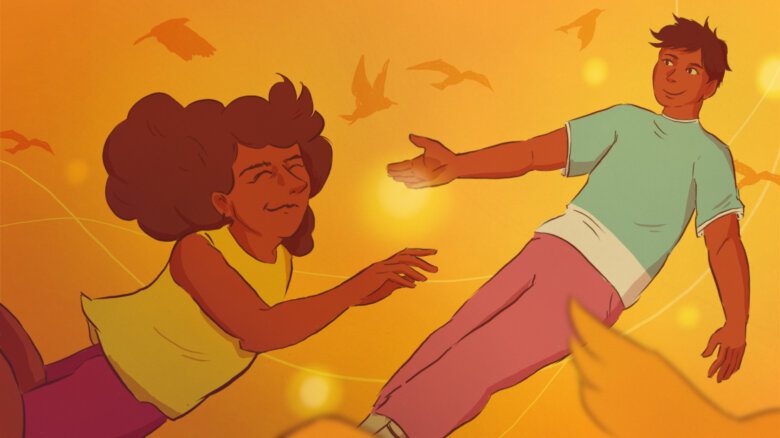In the weeks since writer Emily Sharpe started her project on how Torontonians react to cuddly homo couples (hit the “next” button on this page), I’ve been searching for public displays of affection in this city.
Hand holding. Kissing. Hugging. Ear whispering. Adjusting one another’s clothes. Any behaviour that tells the world, “I’m attracted to this person and am comfortable touching him or her in an intimate way.”
I’ve been disappointed. On fortress Church St, I’ve seen only a handful of people holding hands in the past few weeks; off Church St I’ve seen not a single duo overlapping each other’s personal space. And I’m talking about Queen, College and the Danforth – not a Keg in 905.
The overall effect of this PDA moratorium is that gay and lesbian couples (and by “couples” I mean any two people who are on intimate terms, including everyone from flirty friends to long-term partners) are mostly absent from daily city life.
It might sound crazy to suggest that Toronto queers are still mostly invisible. We know, of course, Toronto is full of homos. They have a whole neighbourhood. We read about them in mainstream publications and in gay and lesbian publications. We watch them on TV, see them in court, meet them on-line, in bars, at house parties or at work. We can have sex with dozens of them in one evening, if we play our cards right. We can walk through Ikea on a Saturday afternoon and call them out, “He’s a fag… and him… and him with the candle holders.”
But to see two men or two women kiss in the window of a restaurant on King St still causes passersby to miss a step. Everyone feels a little weird.
Public images of gay people usually fall into two camps, making the PDA deficit particularly depressing.
There is the “culturally gay” image, personified by TV characters like those on Will And Grace. This image, if somewhat fragile, is a pretty easy sell to mom: “Look, you know I’m gay because of the way I dress and do my hair. You don’t need to know about my sex life. I’m out to you because I told you and because you know my taste in music.” This is how we know, when wandering through the Eaton Centre, there are homos everywhere. That bag, those shoes, that walk.
This image leaves the “sex” out of “homosexual,” so we have a separate marketing division for our sexual selves, and here the spokesperson is the porn star: Being gay is all about who you fuck. Gay folks regularly seek sexual partners and there are happily many venues, some well advertised, to do so.
The problem with both these public faces is that if people aren’t looking for them, they’re not going to see them. Sure, you think that piercing screams, “big dyke,” but the straight people around you have no idea what it means. Sure, there were dozens of guys having sex at that party last weekend, but the straight people next door still think the place is a frat house.
PDA is the one behaviour that says: It doesn’t matter if you want to know whether gay people exist – they do. PDA erases all the illusions and denials: He’s just shy, she’s just a tomboy, he might be openly-gay but I don’t have to think about what he does in bed.
Why don’t Toronto homos snog on their subway and sidewalks? I would like to think it’s because big city dwellers are just too cool for hand holding. Or that Toronto couples are horn dogs always looking for action, who don’t want to scare any potential tricks away.
But I think it’s really because they’re scared. The truth is that there’s still a risk of discomfort or worse.
It’s a risk worth taking, though, if it means more impulsive kissing on street corners. Who knows where it could lead?
Paul Gallant is Features Editor and Acting News Editor for Xtra.

 Why you can trust Xtra
Why you can trust Xtra


